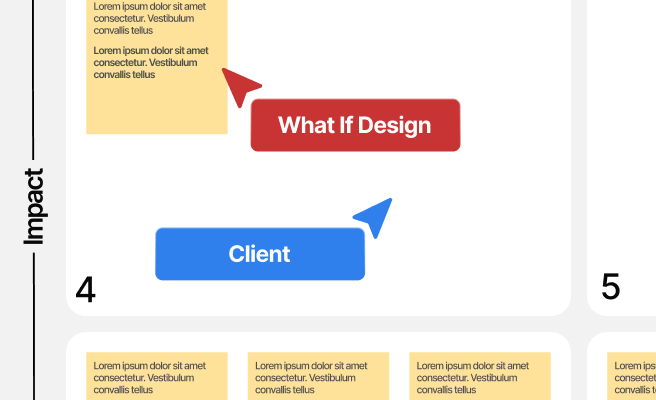Solution Space
<p>Solution space refers to the range of possible solutions that can be explored and implemented to address a particular problem or achieve a specific goal. In the context of product design, especially within the climate tech industry, understanding and effectively navigating the solution space is crucial for innovation and sustainability.</p>
<p>The concept of solution space is vital because it allows designers and engineers to consider multiple approaches to solving a problem, leading to more creative and effective solutions. By expanding the solution space, teams can explore a wider array of possibilities, enabling them to identify the most viable and impactful options.</p>
<p>Historically, the idea of solution space has its roots in fields like operations research and systems engineering, where it has been used to optimize complex systems and processes. In product design, it involves considering various design elements, user needs, and environmental constraints to create products that are both functional and sustainable.</p>
<h2 style="color: black; text-decoration: none;">Components of Solution Space</h2>
<p>In product design, solution space encompasses several key components:</p>
<ul>
<li><b>Design Elements:</b> These include the physical and digital aspects of a product, such as materials, interfaces, and functionality.</li>
<li><b>User Needs:</b> Understanding the target audience's requirements and preferences is essential for creating products that meet their needs.</li>
<li><b>Environmental Constraints:</b> Considering sustainability and environmental impact is crucial in the climate tech sector. Designers must evaluate the ecological footprint of their products.</li>
<li><b>Technological Capabilities:</b> Utilizing the latest technologies and innovations can expand the solution space and lead to more efficient and effective designs.</li>
</ul>
<h2 style="color: black; text-decoration: none;">Benefits of Exploring Solution Space</h2>
<p>Exploring the solution space offers several benefits for product designers in the climate tech industry:</p>
<ul>
<li><b>Innovation:</b> By considering a broad range of possibilities, designers can develop innovative solutions that address complex challenges in unique ways.</li>
<li><b>Sustainability:</b> A comprehensive solution space allows for the consideration of environmentally friendly materials and processes, leading to more sustainable products.</li>
<li><b>User-Centric Design:</b> Understanding user needs within the solution space ensures that the final product is user-friendly and meets the target audience's expectations.</li>
<li><b>Risk Mitigation:</b> Exploring multiple solutions helps identify potential risks and challenges early in the design process, allowing for more robust and resilient products.</li>
</ul>
<h3 style="color: black; text-decoration: none;">Practical Applications</h3>
<p>In the climate tech sector, companies like <a href="https://www.frogdesign.com/" style="color: #2896FF; text-decoration: underline;">Frog Design</a> and <a href="https://www.ideo.com/" style="color: #2896FF; text-decoration: underline;">IDEO</a> have successfully navigated solution spaces to create impactful products. For instance, a climate tech startup might explore various renewable energy sources, such as solar, wind, and bioenergy, to determine the most effective solution for reducing carbon emissions.</p>
<p>Another example is the development of sustainable agricultural technologies. By exploring a wide solution space, companies can create products that optimize water usage, reduce chemical inputs, and enhance crop yields, contributing to more sustainable farming practices.</p>
<h3 style="color: black; text-decoration: none;">Tools and Techniques</h3>
<p>Several tools and techniques can help product designers effectively navigate the solution space:</p>
<ul>
<li><b>Brainstorming and Ideation:</b> Collaborative sessions where team members generate a wide range of ideas and solutions.</li>
<li><b>Prototyping:</b> Creating physical or digital models of potential solutions to test and refine concepts.</li>
<li><b>Simulation and Modeling:</b> Using software tools to simulate the performance and impact of different solutions.</li>
<li><b>UX Audits:</b> Evaluating user experience to identify areas for improvement and expand the solution space.</li>
</ul>
<h2 style="color: black; text-decoration: none;">Conclusion</h2>
<p>Effectively navigating the solution space is critical for product designers in the climate tech industry. By considering a wide range of possibilities and leveraging innovative tools and techniques, designers can create sustainable, user-centric products that address complex environmental challenges. Expanding the solution space leads to more innovative, sustainable, and impactful solutions, ultimately contributing to a more sustainable future.</p>
<p>To learn more about improving your solution space exploration strategies, visit <a href="https://www.hugeinc.com/" style="color: #2896FF; text-decoration: underline;">Huge Inc.</a> or <a href="https://www.rga.com/" style="color: #2896FF; text-decoration: underline;">R/GA</a> for expert insights and services.</p> <p>To understand the power of design across industries and sectors, view our diverse portfolio of works. <a href="https://www.whatifdesign.co/work" style="color:#2896FF; text-decoration:underline;">View our portfolio</a>.</p> <p>If you’re looking for inspiration to elevate customer and user experience for enterprise-grade products, View our work with the Ministry of Health of Saudi Arabia for curating the UX of an <a href="https://www.whatifdesign.co/work/enterprise-software-for-hospitals" style="color:#2896FF; text-decoration:underline;">Asset Management Tracking Platform</a></p>
<p>Ready to get started? <a href="https://cal.com/akhilak/what-if-design?duration=30" style="color:#2896FF; text-decoration:underline;">Book a 1:1 consultation call</a> with us today.</p>

Let's scale your impact with great design.
Free consultation, no sales pitch
Thank you! Your submission has been received!
Oops! Something went wrong while submitting the form.
Let’s talk
Nothing great is built alone.
Let’s connect about your vision, our work and how we can collaborate.
Get in touch

